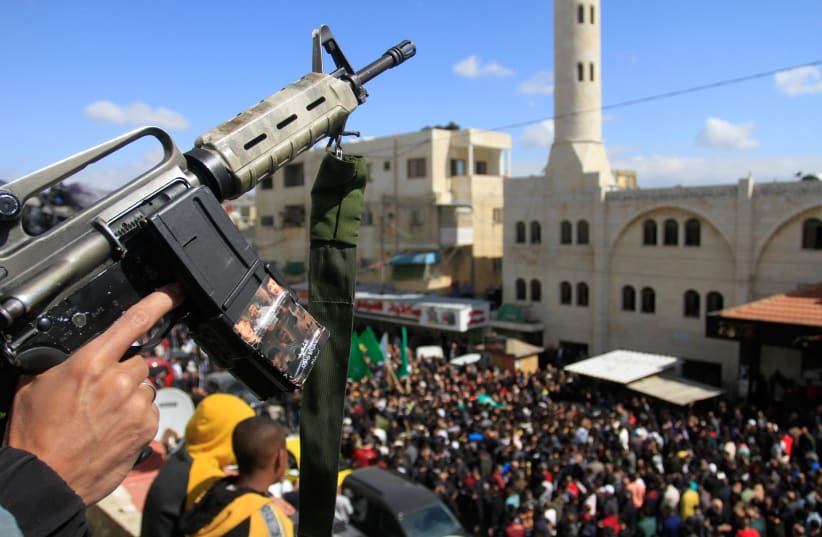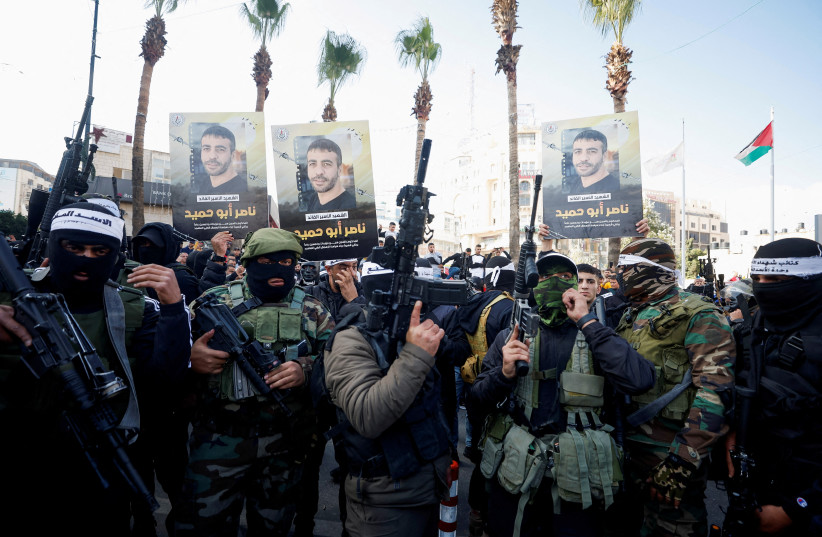As Ramadan approaches this week, there are a variety of reports about the desire of Israel and the Palestinian leadership to try to calm tensions ahead of the month of fasting.
These statements are important and the attempts to meet in Egypt to help facilitate this calm is important. However, the previous attempt to calm tensions via a meeting in Aqaba in Jordan didn’t pan out.
The problem is that there is an elephant in the room in terms of the rising shooting attacks in the West Bank. This is a unique phenomenon and deserves to be analyzed as its own phenomenon, not related to Israel’s former conflicts with Hamas in Gaza, or necessarily linked to other tensions, such as with Iran.
Growing presence of weapons among Palestinians in the West Bank
Beginning late last year in a series of reports we examined the growing presence among Palestinians of M-16 or AR-15 style rifles and variants of them, primarily M-4 carbines or CAR-15s, or what is called an XM-177. These are similar-style rifles manufactured by Colt and other companies. They are popular not only with the United States but also other countries that are close partners of the United States, such as Jordan.
The weapon used in this shooting this week in Huwara was not from these type of rifle variants. That appears to be an exception.
Many other gunmen who have been involved in gun battles with Israel over the last months have been seen with M-16 or M-4 style rifles. This includes many of the photographs and videos presented online in the wake of these clashes usually photos memorializing the terrorist gunmen as “martyrs.” However, the pride with which these men show off their weapons clearly goes beyond just using them as a “tool” in their battle with Israel. The Tehran Times, which supports the Iranian regime, ran a cover of its “Man of the Year” and gave the title to one of the members of the Palestinian Lion’s Den group in Nablus. Unsurprisingly he is holding a rifle in the photo.
In photos of the gunman killed on March 16 all the men seem to have the same style of rifles mentioned above. One of them is actually holding three rifles in a photo posted online. And these were not the only photos and videos from last week showing a plethora of these types of weapons. Joe Truzman, a research analyst at FDD who focuses on Palestinian militancy, has done excellent work documenting most of these scenes in the wake of the clashes.
The prevalence of the rifles is also not relegated to some secret where these guys pose in a basement somewhere. In fact, many of the photos that are distributed after, or the scenes of armed men marching at funerals, are scenes that take place in the open. The men gather together rifles, sometimes several for each gunman, and parade with them or take photos. The insinuation and implication is that they have easy access to, and are swimming in armaments. This could be propaganda by the organizations, distributing rifles to a few men and then circulating them around for photos. However, the numbers shown on videos don’t seem to be an example of a limited number of weapons in the hands of terrorists and gunmen.
This points to a questionable trend. While conflict with Gaza, which is run by Hamas, as remained relatively quiet, there has been an obvious uptick in the last year of increasing violence in the West Bank. This has included Israel’s operations in Jenin and also Nablus and Jericho. Clearly, the northern West Bank is the focus of the rising instability. This instability appears to be underlined by the weapons trade and the apparent increased ease of access to rifles. This is not an ease of access to weapons in general, it is specific to rifles and appears to be linked to an increase in shooting attacks.
On the other hand, there is another issue that is present. While conflict with Gaza appears to be decreased, as the moment, there are other question marks about regional conflicts. For instance, reports this week by Palestinian Islamic Jihad accused Israel of killing one of its members in Damascus. Last week Israel also said that it suspected Hezbollah of involvement in the infiltration of a terrorist from the northern border who placed an IED near Metulla junction.
However, the West Bank remains a center of increasing conflict and this cannot be ignored in the region. Other countries are working on diplomatic solutions to various regional conflicts. This includes the meetings between Saudi Arabia and Iran and also Turkey and Egypt. This could have ramifications for Yemen and Libya. In addition, it could have ramifications for Syria and a prospect of the Syrian regime working with Turkey on issues relating to Idlib and northern Syria. Much remains to be done on these areas, but these are the key places where the region was suffering from instability and which leads to violence and the smuggling of weapons and threats. For instance, Iran exploited the vacuum in power in Iraq and Syria to move weapons to both countries and to Lebanon.
The West Bank is now in the spotlight as an area of instability and also gun violence. This could become a regional outlier and it remains to be seen how Israel and other countries interested in peace may address this.

